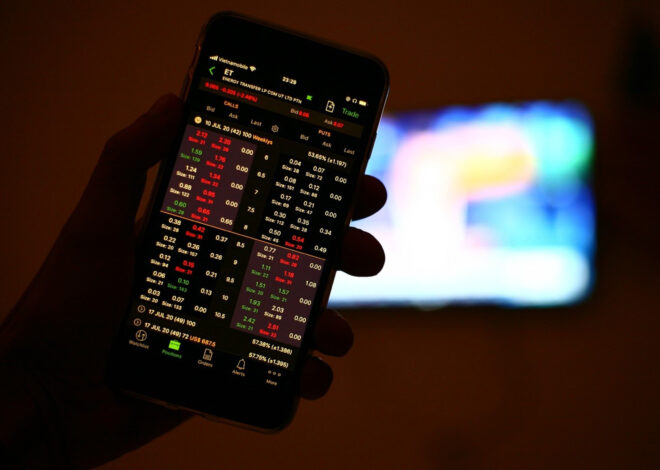
What is the Swap in Forex
Understanding Forex Swaps: An In-Depth Look
Forex swaps are an essential component of the foreign exchange market, and comprehending their mechanisms can significantly enhance a trader’s strategies. This article delves into the intricacies of forex swaps, their influences on trading strategies, and the implications of interest rates on swap calculations.
What is a Forex Swap?
A forex swap, or rollover, is the process of exchanging one currency for another, typically through a series of transactions that occur over a specific period. In forex trading, a swap is a fee or payment that traders incur when they hold positions overnight. Essentially, it’s the difference between the interest rates of the two currencies involved in the trade.
Key Features of Forex Swaps:
- Interest Rate Differentials: The primary factor determining the swap rate.
- Holding Period: Swaps are predominantly applied to positions held overnight.
- Fee or Credit: Depending on the interest rate differential, traders may either pay a fee or earn a credit.
Understanding the Basics of Forex Swaps Explained
To better understand forex swaps, it’s crucial to grasp the concept of interest rates. Each currency has a base interest rate set by its central bank. When a trader goes long on a currency pair, they are effectively borrowing the base currency and selling the quote currency. Conversely, going short involves selling the base currency and buying the quote currency.
Example:
If a trader goes long on EUR/USD and holds the position overnight, they may receive or pay a swap fee based on the interest rate differential between the Eurozone and the United States.
The Role of Interest Rates in Forex Swap Calculations
Interest rates play a pivotal role in determining the swap rates. Forex brokers typically provide daily swap rates based on the interest rate differentials of the currencies involved. Here’s a simplified breakdown of how interest rates affect swaps:
- Positive Swap: If the currency you are buying has a higher interest rate than the currency you are selling, you may earn a positive swap.
- Negative Swap: Conversely, if the currency you are buying has a lower interest rate than the currency you are selling, a negative swap will apply.
Comparative Table of Forex Swap Scenarios
| Scenario | Positive Swap | Negative Swap |
|---|---|---|
| Currency Pair | AUD/JPY (AUD has a higher rate) | USD/JPY (USD has a lower rate) |
| Trader Action | Long Position | Short Position |
| Outcome | Credit received on position hold | Fee incurred on position hold |
How Forex Swaps Influence Trading Strategies Today
Forex swaps can significantly influence trading strategies, especially for traders using carry trade strategies. A carry trade involves borrowing funds in a currency with a low interest rate and investing them in a currency with a higher rate, thus benefiting from the interest rate differential.
Practical Tips for Using Forex Swaps in Trading:
- Evaluate Interest Rates: Always consider the current interest rate environment before entering trades.
- Choose Currency Pairs Wisely: Focus on pairs with significant interest rate differentials to maximize potential swap profits.
- Monitor Swap Rates: Keep an eye on daily swap rates provided by your broker.
Key Benefits and Risks of Using Forex Swaps
Benefits:
- Additional Income: Traders can earn swaps when holding positions with favorable interest rates.
- Flexible Trading: Swaps allow for longer-term positions in the market without the need to close trades daily.
Risks:
- Market Volatility: Sudden changes in interest rates or market conditions can lead to unexpected swap fees.
- Overnight Risk: Holding positions overnight exposes traders to potential adverse market movements.

Common Misconceptions About Forex Swaps Debunked
- Misconception 1: All swaps are unfavorable.
Reality: Depending on the currency pair and market conditions, swaps can be positive or negative. - Misconception 2: Swaps apply only to long positions.
Reality: Swaps affect both long and short positions; the nature of the swap depends on interest rate differentials. - Misconception 3: Forex swaps are unnecessary fees.
Reality: Swaps can be utilized strategically to enhance trading profitability.
Practical Tips for Managing Forex Swap Positions Effectively
- Use a Swap Calculator: Many trading platforms and brokers offer tools to calculate potential swap charges or income.
- Stay Informed: Keep abreast of interest rate announcements and economic indicators that can influence rates.
- Utilize Stop-Loss: To mitigate overnight risk, implement stop-loss orders on positions susceptible to adverse movements.
In conclusion, understanding forex swaps is crucial for any trader looking to optimize their strategies in the foreign exchange market. By grasping the nuances of interest rates, the mechanics of swaps, and their potential impacts on trading positions, traders can make informed decisions that enhance their overall trading performance.



Great breakdown of how to use forex swaps! I will try to use this knowledge in my next trades.
‘Evaluating interest rates’ before trades seems essential now. Thanks for the insights!
The misconceptions section is very enlightening. I thought all swaps were bad!
This article clarifies what a forex swap is. I understand now that it’s all about interest rates.
I appreciate the practical tips for trading with swaps. I will definitely keep an eye on those interest rates.
I learned a lot about how forex swaps work. It’s interesting how the interest rates affect everything.
The explanation of positive and negative swaps is really helpful. I didn’t know they could earn you money!
‘Carry trade’ sounds like a smart strategy! I’ll need to research that more after reading this.
‘Overnight risk’ was something I never considered before. This article opened my eyes to new risks.